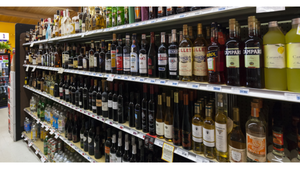Tears without fear
Creative marketing campaigns behind onions and garlic are capturing the imagination of consumers.
January 1, 2018
Creative marketing campaigns behind onions and garlic are capturing the imagination of consumers. Generating excitement for a product category founded on a history and tradition that predates the establishment of this country itself sounds like a close-to-impossible task. One look at the onions and garlic categories, however, and it seems that today’s marketers are tackling the improbable feat. The U.S. food scene is still riding the effects of a resurgence that drove consumers into their kitchens and opened their eyes to new and unique flavors and meal ideas. The media and culinary scene not only continues to inspire at-home cooks with new trends, but it is reinvigorating the usage of age-old ingredients. Onions are a prime example. Arguably the most versatile item in the produce department, “onions are called for in virtually 80% of recipes, especially as people’s cuisine has become more diversified,” says Mark Breimeister, director of sales for Oso Sweet, based in Savannah, Ga. Diversity is just one of onion’s many qualities that are behind the category’s strong sales, say industry observers. “It is difficult to single out any drivers,” says Teri Gibson, director of marketing and customer relations for Peri & Sons Farms. “Year-in, year-out, onions continue to be a household staple. The key is to continually provide consumers with new and interesting ways to incorporate, and even feature, onions in the meals they prepare as the seasons change.” Gibson says that every season presents opportunities for selling onions, and points out some of the Yerington, Nev.-based grower’s seasonal promotions as an example: Bloomin’ BBQ Onion, Sweetie Sweet Onions, PINK Breast Cancer Awareness, OnionXpress trade programs are just a few. She adds that, “its the holidays and events that bring friends and family together around food that fuel sales.” The summer months, when onions have more competition across the department’s shelves, is a focus for many marketers. Companies like Shuman Produce and USA Onions bring onions into the spotlight in the warm seasons with grilling promotions. Looking at sweet onions specifically, officials at the Reidsville, Ga.-based sweet onion grower Shuman Produce, note that a couple of consumers’ favorite uses of sweet onions are on top of burgers and steaks and sliced on salads. “Summer grilling and fall tailgating seasons are prime culinary influencers of sweet onions where they are used in a wide variety of iconic dishes built around these event-filled times,” says John Shuman, director of sales and marketing, at Shuman. Sweet onions continue to steal market share from other varieties, accounting for approximately one-third of total sales, say observers. This is partly due to their starring role on restaurant menus and in recipes featured on TV cooking shows. Delbert Bland, owner of Bland Farms, attributes their popularity in the gourmet culinary scene to the fact that chefs can “do everything with a sweet onion that they could with a hot onion, but not the other way around.” The same influence is happening in the garlic category. Officials at The Garlic Co. say that the presence of garlic on cooking shows has impacted consumers’ acceptance and appreciation of all forms of garlic. It also entices less experienced cooks to use garlic in their unique recipes, says Michael Layous, sales and marketing rep for The Garlic Co., based in Bakersfield, Calif. “Rather than having concerns that garlic will take ‘center stage’ within the meal, consumers realize they can use garlic to simply complement the flavors of the other ingredients in a dish,” he says. Store excitement Onions and garlic make it onto every shopper’s grocery list—and frequently. Observers note that neither category has an off-season and retailers that highlight the categories in slower time periods can boost incremental sales. Bringing onions and garlic to consumers’ front-of-mind by inspiring usage through meal-oriented and cross-merchandising displays is one tactic that retailers agree on. Garlic, for instance, as small as it is, can get lost in the mix of the produce department. Some retailers, says Layous, create stand-alone displays to remind shoppers.
Others, he says, position it next to complementary food products. “They may hang small bags of whole bulbs down the aisle where a consumer can find pasta or place it next to tomatoes, avocados or onions in the produce section to prompt thoughts of guacamole, salsa or other dips. For peeled garlic that requires refrigeration, retailers may position it with other value-added, fresh-cut vegetables or next to packaged herbs,” he adds. Retailers who may be short on ideas should be looking to their suppliers for inspiration, say observers. Many grow multiple products, making them a one-stop shop. Bland Farms is going that route this year with its introduction of sweet potatoes. The Glennville, Ga.-based grower will be jointly merchandising sweet onions and sweet potatoes under its brand. Bland says the growing seasons complement each other making it an easy transition and will make distribution and stocking fresh product easier for retailers. Using similar-style packaging and joint merchandising bins, the grower wants to encourage consumers to “eat smart and eat sweet at the same time,” says Bland. Local is still a driving force for consumer purchase decisions. Growers note that despite an unrecognizable difference between U.S.-grown and imported onions, consumers—and retailers, due to cost savings—still prefer a local product. Motivated by this demand, Oso Sweet is kicking off a new Florida program to extend their U.S. growing season, while other U.S.-focused organizations are playing up their local position. USA Onions, “America’s Local Grower,” as Sherise Jones, marketing director for the Parma, Idaho-based organization puts it, is highlighting locality with its “From the Heart of Onion Country” campaign. She says the size and production of the region can give the impression of a “huge corporate farm” environment. The campaign is designed to tackle this perception by sharing information about the “150 or so family-run farms” that provide onions under the USA Onions brand. “The care that is taken to raise a quality nutritious product is similar to that of a gardener. They are very hands on,” says Jones. “In tandem, we have a heart-healthy product, and we thought it would be nice to share both of those pieces.” The theme of the campaign is that “we put our heart and soul into the product and its heart healthy too,” she adds. The Walla Walla Sweet Onion Committee also celebrates its locality—with a party. For more than 30 years, the committee has hosted its Sweet Onion Festival, complete with arts and crafts, commercials vendors, chef demos and recipes contests, along with a kids’ section that includes onions decorating and onion bowling. The highlight may be, however, the onion-eating contest. “We set up on a corner downtown and have entertainment all weekend,” says Kathy Fry-Trommald, executive director for the Walla Walla, Wash.-based organization. “We are not a big city but we figure about 5,000-10,000 people come by.”
About the Author
You May Also Like




